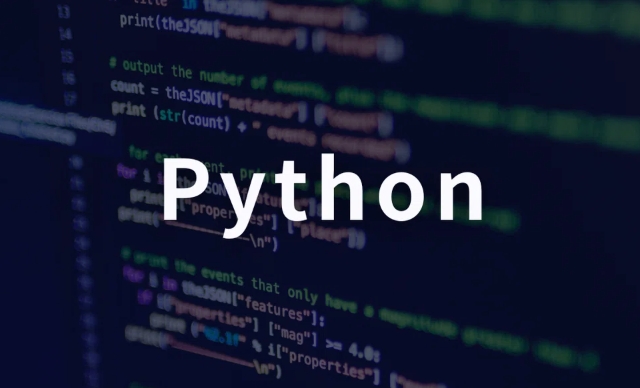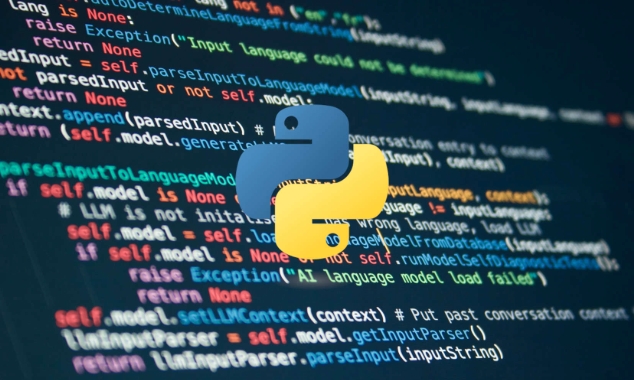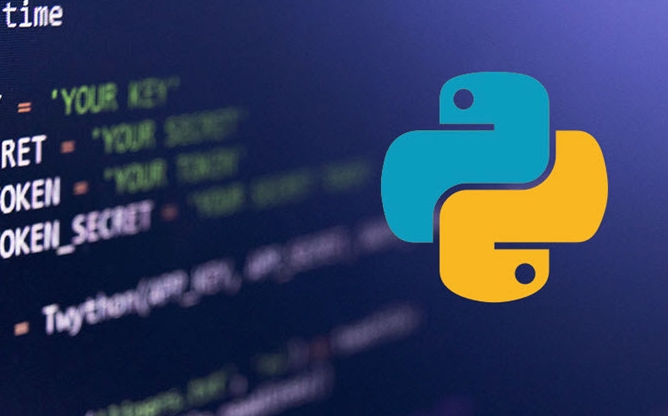 Backend Development
Backend Development
 Python Tutorial
Python Tutorial
 What is a weak reference in Python and when should you use it?
What is a weak reference in Python and when should you use it?
What is a weak reference in Python and when should you use it?
Aug 01, 2025 am 06:19 AMWeak references exist to allow referencing objects without preventing their garbage collection, helping avoid memory leaks and circular references. 1. Use WeakKeyDictionary or WeakValueDictionary for caches or mappings to let unused objects be collected. 2. Use weak references in child-to-parent relationships to break cycles and allow parents to be deleted. 3. Use WeakValueDictionary for caching where entries should vanish when objects are no longer needed elsewhere. Always check if a weak reference returns None, as the object may have been collected, and remember they only work with objects that support weak referencing, such as user-defined classes.

A weak reference in Python is a reference to an object that does not increase the object’s reference count. This means the object can be garbage collected even if a weak reference to it still exists. In contrast, normal (strong) references keep objects alive as long as those references exist.

Why weak references exist
Python uses reference counting as part of its memory management. When an object’s reference count drops to zero, it’s immediately eligible for garbage collection. But sometimes, you want to refer to an object without preventing it from being cleaned up when it's no longer needed elsewhere. That's where weak references come in.
You create a weak reference using the weakref module:

import weakref
class MyClass:
pass
obj = MyClass()
weak_ref = weakref.ref(obj)
print(weak_ref()) # Returns the object if it's still alive
del obj
print(weak_ref()) # Now returns None — object has been collectedWhen should you use weak references?
1. Avoiding memory leaks in caches or mappings
If you're storing references to objects in a cache or dictionary, strong references can unintentionally keep large or temporary objects alive.
Example: tracking callbacks or listeners

import weakref
# Store callbacks weakly so they don't prevent cleanup
callbacks = weakref.WeakKeyDictionary()
def on_cleanup(obj):
print("Object went away:", obj)
obj = MyClass()
callbacks[obj] = on_cleanup # Key is weak — when obj dies, entry is removed
del obj # Entry automatically removed from callbacksWeakKeyDictionary uses weak references for keys. WeakValueDictionary does the same for values — useful for caches.
2. Parent-child or circular relationships
When a parent holds children and children need a reference back to the parent, a strong reference in both directions creates a cycle. Using a weak reference for the child-to-parent link avoids this.
class Child:
def __init__(self, parent):
self.parent = weakref.ref(parent) # Weak reference
def get_parent(self):
p = self.parent()
if p is not None:
return p
else:
print("Parent has been deleted")
return NoneNow, when the parent is deleted, the child won’t keep it alive.
3. Caching without memory bloat
You can use weakref.WeakValueDictionary to build a cache where entries disappear when objects are no longer used elsewhere.
import weakref
_instance_cache = weakref.WeakValueDictionary()
def get_instance(key):
obj = _instance_cache.get(key)
if obj is None:
obj = MyClass()
_instance_cache[key] = obj
return objIf no other part of the program holds a reference to the instance, it gets garbage collected, and the cache entry is automatically removed.
Key points to remember
- Weak references are not always appropriate — they return
Noneif the object is gone, so you must check. - They only work with objects that support weak referencing (most user-defined classes do; some built-in types like
listordictdon’t). - Use
weakref.ref,WeakKeyDictionary,WeakValueDictionary, orWeakSetdepending on your use case. - They help break reference cycles and reduce memory footprint in long-running applications.
Basically, use weak references when you need to observe or refer to an object without interfering with its lifecycle. They’re especially useful in GUI toolkits, event systems, caches, and tree-like data structures with back-references.
The above is the detailed content of What is a weak reference in Python and when should you use it?. For more information, please follow other related articles on the PHP Chinese website!

Hot AI Tools

Undress AI Tool
Undress images for free

Undresser.AI Undress
AI-powered app for creating realistic nude photos

AI Clothes Remover
Online AI tool for removing clothes from photos.

Clothoff.io
AI clothes remover

Video Face Swap
Swap faces in any video effortlessly with our completely free AI face swap tool!

Hot Article

Hot Tools

Notepad++7.3.1
Easy-to-use and free code editor

SublimeText3 Chinese version
Chinese version, very easy to use

Zend Studio 13.0.1
Powerful PHP integrated development environment

Dreamweaver CS6
Visual web development tools

SublimeText3 Mac version
God-level code editing software (SublimeText3)

Hot Topics
 How to use PHP combined with AI to achieve text error correction PHP syntax detection and optimization
Jul 25, 2025 pm 08:57 PM
How to use PHP combined with AI to achieve text error correction PHP syntax detection and optimization
Jul 25, 2025 pm 08:57 PM
To realize text error correction and syntax optimization with AI, you need to follow the following steps: 1. Select a suitable AI model or API, such as Baidu, Tencent API or open source NLP library; 2. Call the API through PHP's curl or Guzzle and process the return results; 3. Display error correction information in the application and allow users to choose whether to adopt it; 4. Use php-l and PHP_CodeSniffer for syntax detection and code optimization; 5. Continuously collect feedback and update the model or rules to improve the effect. When choosing AIAPI, focus on evaluating accuracy, response speed, price and support for PHP. Code optimization should follow PSR specifications, use cache reasonably, avoid circular queries, review code regularly, and use X
 PHP calls AI intelligent voice assistant PHP voice interaction system construction
Jul 25, 2025 pm 08:45 PM
PHP calls AI intelligent voice assistant PHP voice interaction system construction
Jul 25, 2025 pm 08:45 PM
User voice input is captured and sent to the PHP backend through the MediaRecorder API of the front-end JavaScript; 2. PHP saves the audio as a temporary file and calls STTAPI (such as Google or Baidu voice recognition) to convert it into text; 3. PHP sends the text to an AI service (such as OpenAIGPT) to obtain intelligent reply; 4. PHP then calls TTSAPI (such as Baidu or Google voice synthesis) to convert the reply to a voice file; 5. PHP streams the voice file back to the front-end to play, completing interaction. The entire process is dominated by PHP to ensure seamless connection between all links.
 How to develop AI intelligent form system with PHP PHP intelligent form design and analysis
Jul 25, 2025 pm 05:54 PM
How to develop AI intelligent form system with PHP PHP intelligent form design and analysis
Jul 25, 2025 pm 05:54 PM
When choosing a suitable PHP framework, you need to consider comprehensively according to project needs: Laravel is suitable for rapid development and provides EloquentORM and Blade template engines, which are convenient for database operation and dynamic form rendering; Symfony is more flexible and suitable for complex systems; CodeIgniter is lightweight and suitable for simple applications with high performance requirements. 2. To ensure the accuracy of AI models, we need to start with high-quality data training, reasonable selection of evaluation indicators (such as accuracy, recall, F1 value), regular performance evaluation and model tuning, and ensure code quality through unit testing and integration testing, while continuously monitoring the input data to prevent data drift. 3. Many measures are required to protect user privacy: encrypt and store sensitive data (such as AES
 python seaborn jointplot example
Jul 26, 2025 am 08:11 AM
python seaborn jointplot example
Jul 26, 2025 am 08:11 AM
Use Seaborn's jointplot to quickly visualize the relationship and distribution between two variables; 2. The basic scatter plot is implemented by sns.jointplot(data=tips,x="total_bill",y="tip",kind="scatter"), the center is a scatter plot, and the histogram is displayed on the upper and lower and right sides; 3. Add regression lines and density information to a kind="reg", and combine marginal_kws to set the edge plot style; 4. When the data volume is large, it is recommended to use "hex"
 How to use PHP combined with AI to analyze video content PHP intelligent video tag generation
Jul 25, 2025 pm 06:15 PM
How to use PHP combined with AI to analyze video content PHP intelligent video tag generation
Jul 25, 2025 pm 06:15 PM
The core idea of PHP combining AI for video content analysis is to let PHP serve as the backend "glue", first upload video to cloud storage, and then call AI services (such as Google CloudVideoAI, etc.) for asynchronous analysis; 2. PHP parses the JSON results, extract people, objects, scenes, voice and other information to generate intelligent tags and store them in the database; 3. The advantage is to use PHP's mature web ecosystem to quickly integrate AI capabilities, which is suitable for projects with existing PHP systems to efficiently implement; 4. Common challenges include large file processing (directly transmitted to cloud storage with pre-signed URLs), asynchronous tasks (introducing message queues), cost control (on-demand analysis, budget monitoring) and result optimization (label standardization); 5. Smart tags significantly improve visual
 PHP integrated AI emotional computing technology PHP user feedback intelligent analysis
Jul 25, 2025 pm 06:54 PM
PHP integrated AI emotional computing technology PHP user feedback intelligent analysis
Jul 25, 2025 pm 06:54 PM
To integrate AI sentiment computing technology into PHP applications, the core is to use cloud services AIAPI (such as Google, AWS, and Azure) for sentiment analysis, send text through HTTP requests and parse returned JSON results, and store emotional data into the database, thereby realizing automated processing and data insights of user feedback. The specific steps include: 1. Select a suitable AI sentiment analysis API, considering accuracy, cost, language support and integration complexity; 2. Use Guzzle or curl to send requests, store sentiment scores, labels, and intensity information; 3. Build a visual dashboard to support priority sorting, trend analysis, product iteration direction and user segmentation; 4. Respond to technical challenges, such as API call restrictions and numbers
 How to develop AI-based text summary with PHP Quick Refining Technology
Jul 25, 2025 pm 05:57 PM
How to develop AI-based text summary with PHP Quick Refining Technology
Jul 25, 2025 pm 05:57 PM
The core of PHP's development of AI text summary is to call external AI service APIs (such as OpenAI, HuggingFace) as a coordinator to realize text preprocessing, API requests, response analysis and result display; 2. The limitation is that the computing performance is weak and the AI ecosystem is weak. The response strategy is to leverage APIs, service decoupling and asynchronous processing; 3. Model selection needs to weigh summary quality, cost, delay, concurrency, data privacy, and abstract models such as GPT or BART/T5 are recommended; 4. Performance optimization includes cache, asynchronous queues, batch processing and nearby area selection. Error processing needs to cover current limit retry, network timeout, key security, input verification and logging to ensure the stable and efficient operation of the system.
 python list to string conversion example
Jul 26, 2025 am 08:00 AM
python list to string conversion example
Jul 26, 2025 am 08:00 AM
String lists can be merged with join() method, such as ''.join(words) to get "HelloworldfromPython"; 2. Number lists must be converted to strings with map(str, numbers) or [str(x)forxinnumbers] before joining; 3. Any type list can be directly converted to strings with brackets and quotes, suitable for debugging; 4. Custom formats can be implemented by generator expressions combined with join(), such as '|'.join(f"[{item}]"foriteminitems) output"[a]|[





